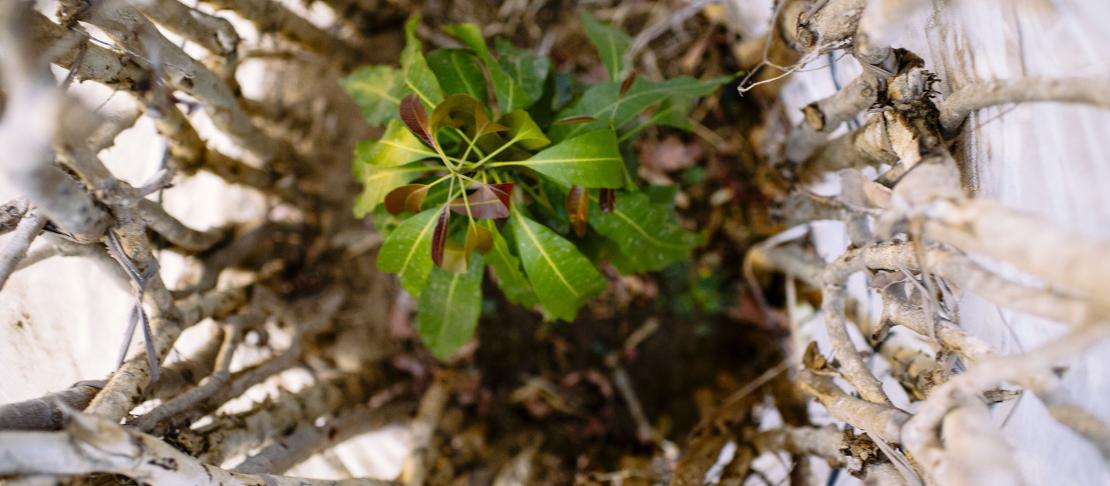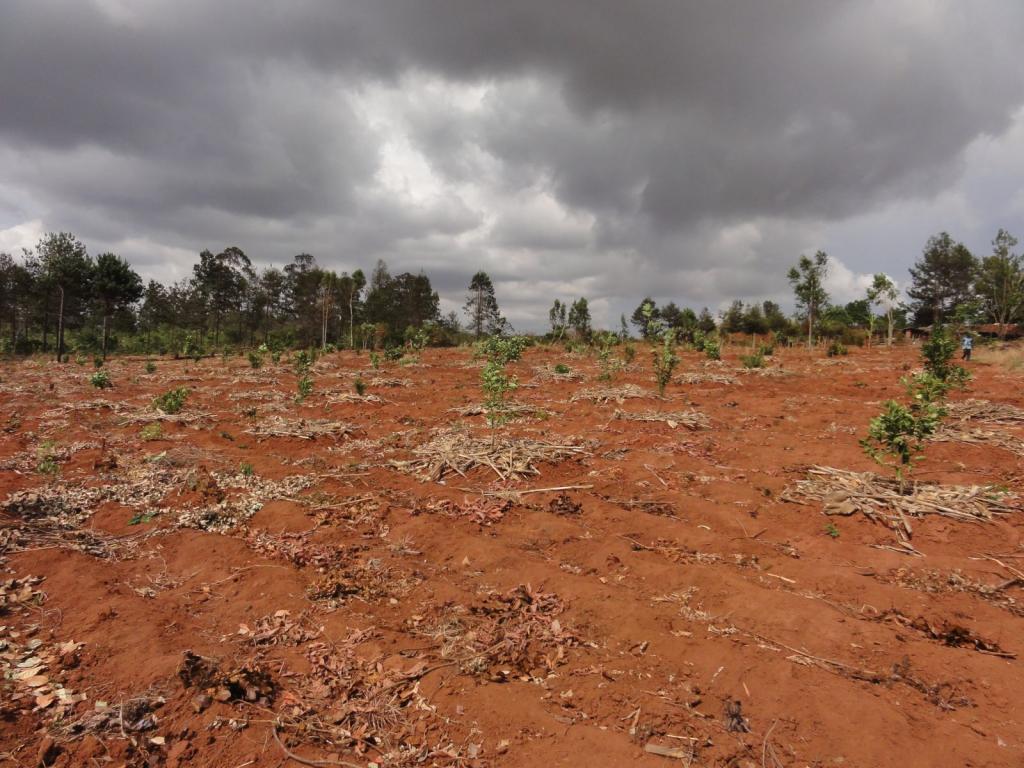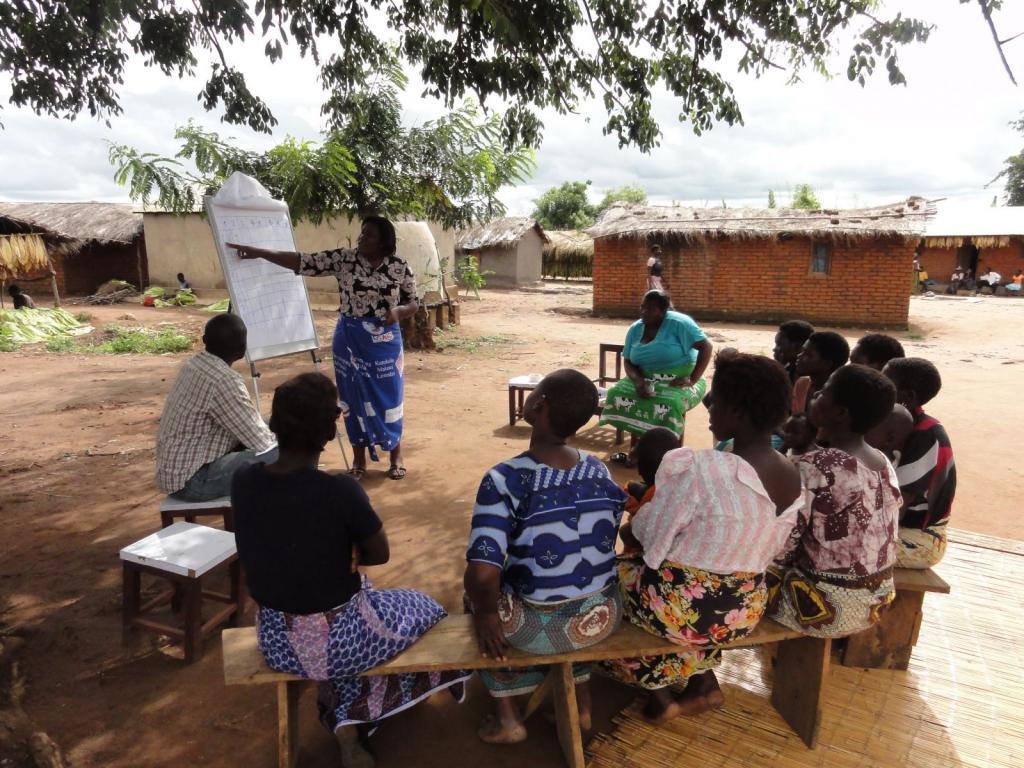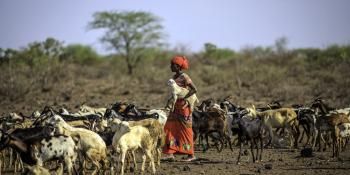Who decides on tree planting: men or women?

“Trees are essential for life,” says Edith, a farmer from Sasu village in the poor and deforested Chiradzulu district of Malawi. “You get a lot of things because of trees, including water on your farm, as trees reduce soil erosion and bring rainfall.” But do Edith and other women in her village have a say in the planting and management of trees?
This story won the CCAFS open blog-story competition for the East Africa region.
Seline Meijer is making a difference to food and farming by investigating gender roles and responsibilities related to tree planting. A better understanding of these roles will mean that we can design better climate adaptation and mitigation programs in the future.
Across the globe, increasing attention is being paid to how trees and agroforestry systems can help mitigate climate change. Trees can and do help farmers build resilience to changing weather patterns by providing them with a range of goods and services.
If trees are to be promoted to farmers for these reasons, it is surely important to know who it is on the farm that makes decisions about tree planting.
Asking the tough questions
Often, it is assumed that decision making is dominated by the head of the household, usually the oldest male, but in my PhD research I sought to find out if this is really the case in Malawi. And if men do make these decisions, will more trees actually get planted than if these decisions are made by women?
Malawi is one of the poorest countries in Africa and faces high levels of poverty and food insecurity. A growing population has increased farming intensity and agricultural expansion which has led to declining soil fertility and crop yields, and loss of forests. Climate change is worsening the situation, with longer droughts and greater flooding causing shorter growing seasons, even poorer crop yields, food shortages, hunger and the spread of disease.
What motivates farmers to plant trees?
In collaboration with the World Agroforestry Centre (ICRAF) I have been working with subsistence farmers in two rural districts in Malawi: Mzimba in the north and Chiradzulu in the south, to better understand what motivates them to plant trees on their land and how decisions are made within farming households about tree planting and tree management.
In these regions, ICRAF has implemented several agroforestry projects in recent years that have supported farmers in their efforts to integrate trees into their farms. These trees have the potential to provide many benefits to the farmers, including better soil fertility and crop yields, more firewood, fruits that supplement nutrition and opportunities for income generation as well as helping farmers adapt to the impacts of climate change.
Joseph, a farmer from the village of Samani Mkandawire in Mzimba district, said to me: “I think the climate has changed, so planting trees will help to bring back a normal climate”.

Trees provide many benefits, such as soil moisture, and could boost crop yields. Photo: S. Meijer
Traditional roles: not so 'traditional' after all
In my study I conducted 135 interviews with household heads and carried out 16 focus group discussions with 127 farmers in Mzimba and Chiradzulu districts to learn more about how household decisions are being made. I found the traditional assumption that it is senior males who make most of the agricultural decisions to be false and an oversimplification of the real situation.
There were many instances where joint decisions are made by husbands and wives together. When it comes to tree planting and management, decisions are more often made by the husband alone compared to other agricultural activities such as crop planting and fertilizer application.

Photo from discussions with female participants on tree planting in the area. Photo: S. Meijer
In patrilineal households, where husbands hold the land titles and which are commonly found in Mzimba district, decisions about tree planting and management were more often made by the household head. But in matrilineal households, where land rights are transferred along the female lines such as is common in Chiradzulu, joint decision making is more common. Similarly, in male-headed households, the head tended to make decisions about tree planting but in female-headed households these decisions were more likely to be made jointly.
A joint decision is a better decision: at least when it comes to tree cover
When it comes to how many trees actually get planted, I found that greater tree densities resulted from joint decision making rather than decisions made by the household head alone. The number of trees planted was no different between men and women.
Learn more
Poster: The role of gender in household decision making on tree planting: A case study from Malawi.
Blog: What makes farmers adopt agroforestry?
* The names of the farmers have been changed due to confidentiality of the study
This discovery that the gender of the household head and kinship structure affected who was the main decision maker is an important finding as it directly affects the density of trees planted by the household.
If agroforestry research, policies and projects are to be relevant and effective, assumptions on headship and gender roles need to be locally checked and validated.
To achieve the greatest success with agroforestry interventions for productivity, food security and climate change mitigation and adaptation in countries like Malawi, a better understanding is needed of how farmers perceive tree planting, how decisions are made about tree planting and what results from these decision making models.
Disclaimer: This story does not reflect the views of the CGIAR Research Program on Climate Change, Agriculture and Food Security (CCAFS)
What are we doing on gender in the context of farming and climate change? Learn more on our dedicated gender page.
Read all the winning stories from CCAFS open story competition
This story on tree planting linked to gender roles and responsibilities in Malawi reflects the work Seline Meijer did as part of her PhD study. Get in touch with Seline on Twitter: @SelineMeijer



